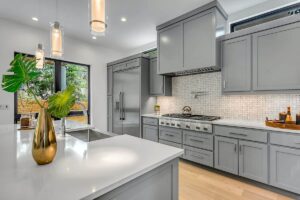Planning a kitchen remodel feels exciting, but you’re probably wondering how long the whole process will take. Most homeowners expect their kitchen renovation to finish in just a few weeks. The reality is quite different. A typical 10×10 kitchen remodel takes 6 to 12 weeks from start to finish, depending on the scope of work and materials chosen.
Understanding the timeline helps you plan better and set realistic expectations. This guide breaks down every phase of kitchen remodeling, from initial planning to the final cleanup. You’ll learn what factors affect timing and how to prepare for each step.
The Reality Behind TV Show Renovations
Television shows make kitchen renovations look easy and fast. They transform entire kitchens in just a few days or weeks. These shows create unrealistic expectations for real-world renovations.
Real kitchen remodels involve many steps that TV shows don’t show. Permits take time to approve. Custom cabinets need weeks to manufacture. Contractors work on multiple projects, not just yours. Material deliveries sometimes arrive late or damaged.
Professional renovations also require proper planning and quality workmanship. Rushing through important steps leads to problems later. Good contractors take time to do things right the first time.
The average kitchen renovation shown on TV would actually take 2-3 months in real life. This includes design time, ordering materials, and actual construction work.
Breaking Down the Kitchen Remodeling Timeline
Kitchen renovations happen in distinct phases. Each phase has its own timeline and requirements. Understanding these phases helps you plan accordingly.
Planning and Design Phase (2-4 weeks)
- Initial consultation with contractors
- Design development and revisions
- Material selection and ordering
- Permit applications
Pre-Construction Phase (1-2 weeks)
- Permit approval
- Final material deliveries
- Site preparation
- Temporary kitchen setup
Construction Phase (4-8 weeks)
- Demolition (1-3 days)
- Plumbing and electrical rough-in (3-5 days)
- Drywall and painting (5-7 days)
- Flooring installation (2-4 days)
- Cabinet installation (3-5 days)
- Countertop installation (1-2 days)
- Appliance installation (1-2 days)
- Final touches and cleanup (2-3 days)
Each phase depends on the previous one being completed properly. Delays in one area affect the entire timeline.
A General Timeline To Remodel Your Kitchen
Weeks 1-2: Planning and Design Your kitchen remodel starts with planning. Meet with designers and contractors to discuss your vision. Review floor plans and make design decisions. This stage sets the foundation for everything else.
Most homeowners spend 1-2 weeks on initial planning. Complex designs or major layout changes may need more time. Don’t rush this phase – good planning prevents costly changes later.
Weeks 3-4: Material Selection and Ordering Choose your cabinets, countertops, appliances, and fixtures during this time. Popular materials may have longer lead times. Custom cabinets typically take 4-6 weeks to manufacture.
Order materials as soon as possible to avoid delays. Having a kitchen remodel in Orange County often means dealing with higher demand and longer wait times for premium materials.
Weeks 5-6: Permits and Final Preparations Apply for necessary permits during this period. Most kitchen remodels need permits for electrical and plumbing work. Permit approval takes 1-2 weeks in most areas.
Use this time to prepare your home for construction. Set up your temporary kitchen and move valuable items to safety.
Weeks 7-10: Active Construction The actual renovation work happens during this phase. Demolition starts first, followed by rough plumbing and electrical work. Then comes drywall, painting, and flooring.
Cabinet installation marks the halfway point of construction. Countertops and appliances come next. Final details like hardware and trim work finish the project.
Weeks 11-12: Final Inspections and Touch-ups Schedule final inspections during the last phase. Address any punch list items or minor repairs. Clean up construction debris and dust.
Your new kitchen should be ready for use by week 12 in most cases.
Factors That Affect Kitchen Remodeling Timeline
Several factors can speed up or slow down your kitchen renovation:
Size and Complexity Larger kitchens naturally take longer to complete. A 10×10 kitchen is considered standard size and typically follows the 6-12 week timeline. Bigger kitchens may need 3-4 months.
Complex layouts with islands or peninsula additions add time. Moving walls or changing the kitchen footprint extends the timeline significantly.
Material Availability Stock cabinets and standard appliances ship quickly. Semi-custom cabinets take 4-6 weeks. Fully custom cabinets need 8-12 weeks or more.
Natural stone countertops require measuring after cabinet installation. This adds 1-2 weeks to the timeline. Quartz countertops often have shorter lead times.
Permit Requirements Simple renovations may not need permits. Major electrical or plumbing changes always require permits. Structural changes definitely need permits and inspections.
Permit approval times vary by location. Some areas approve permits in days, others take weeks. Plan accordingly based on your local requirements.
Contractor Availability Experienced remodeling contractors often have busy schedules. Good contractors may have 4-8 week waiting lists during peak seasons.
Spring and summer are the busiest times for renovations. Fall and winter often have shorter wait times and better contractor availability.
Cost of a Kitchen Remodel
Kitchen remodeling costs vary widely based on finishes and scope of work. Understanding costs helps you plan your budget and timeline appropriately.
Budget-Friendly Remodel ($15,000-$25,000) Basic remodels focus on cosmetic updates. New paint, updated hardware, and affordable appliances make up most of the budget. These projects typically take 3-6 weeks.
Mid-Range Remodel ($25,000-$50,000) Mid-range renovations include new cabinets, countertops, and appliances. Some layout changes may be possible. Expect 6-10 weeks for completion.
High-End Remodel ($50,000+) Luxury remodels feature premium materials and custom elements. These projects often involve layout changes and high-end appliances. Timeline extends to 10-16 weeks or more.
Working with an experienced kitchen remodeling contractor helps manage both costs and timeline effectively. They can suggest ways to get the look you want while staying on schedule.
Engaging in Design Consultations
Professional design consultations are worth the investment. Designers help you make better use of your space and avoid costly mistakes. Most consultations cost $100-$200 per hour.
Good designers ask about your cooking habits and lifestyle needs. They create detailed plans that contractors can follow easily. This reduces confusion and delays during construction.
Bring inspiration photos and measurements to your consultation. Be honest about your budget and timeline expectations. Designers can adjust plans to meet your needs.
Schedule consultations with 2-3 designers before choosing one. Compare their styles, experience, and fees. The right designer makes your project smoother and more successful.
Choosing Your Appliances
Appliance selection significantly impacts your timeline and budget. Start shopping early to understand your options and lead times.
Standard Appliances Basic appliances from major brands ship quickly. Most are available within 1-2 weeks of ordering. These work well for budget-conscious renovations.
Mid-Range Appliances Popular mid-range models may have 2-4 week lead times. These offer better features and styling than basic models. They represent good value for most homeowners.
High-End Appliances Luxury appliances often require 6-12 weeks for delivery. Some European brands have even longer wait times. Order these items early in your planning process.
Consider appliance packages for better pricing and coordinated styling. Many retailers offer discounts when you buy multiple appliances together.
Picking Fixtures and Fittings
Faucets, sinks, and lighting fixtures seem like small details but they matter. These items affect both function and style in your new kitchen.
Kitchen Sinks Undermount sinks require template creation after countertop measurement. This can add a few days to your timeline. Drop-in sinks install more quickly.
Farmhouse sinks need special cabinet modifications. Plan for this during the design phase to avoid delays later.
Faucets and Hardware Choose faucets early so plumbers can rough-in connections properly. Cabinet hardware should match your overall design style.
Order a few extra pieces of hardware in case some get damaged or lost during installation.
Lighting Fixtures Plan your lighting layout carefully. Under-cabinet lighting requires electrical rough-in work. Pendant lights over islands need proper electrical boxes installed.
LED fixtures last longer and use less energy than traditional options. They’re worth the extra cost in most cases.
Selecting Your Cabinets
Cabinet selection has the biggest impact on your timeline. Different cabinet types have very different lead times.
Stock Cabinets Ready-made cabinets are available immediately or within days. Limited styles and sizes but good for quick renovations. Quality varies significantly between manufacturers.
Semi-Custom Cabinets Most popular choice for kitchen renovations. Good selection of styles, colors, and sizes. Typical lead time is 4-6 weeks after ordering.
Custom Cabinets Built specifically for your kitchen layout and style preferences. Lead times range from 8-16 weeks depending on complexity. Highest quality and unlimited options.
Measure your space carefully before ordering cabinets. Small measurement errors can cause major delays and extra costs.
Preparing To Remodel a Kitchen
Proper preparation makes your renovation go more smoothly. Start preparing at least 2 weeks before construction begins.
Decluttering and Organizing
Empty all cabinets, drawers, and pantry areas completely. Sort items into three categories: keep, donate, and throw away. This is a great time to get rid of items you don’t use.
Pack dishes and cookware in labeled boxes. Store them in another room where they won’t get dusty. Keep everyday items accessible in your temporary kitchen setup.
Remove personal items from walls and surfaces. Construction creates dust that gets on everything. Protecting your belongings now saves cleaning time later.
Safeguarding Valuables
Move valuable or fragile items away from the kitchen area. Vibrations from demolition and construction can damage delicate objects nearby.
Cover furniture in adjacent rooms with plastic sheeting. Construction dust travels farther than you might expect. Take photos of your current kitchen for insurance purposes.
Remove or protect artwork, electronics, and collectibles within 20 feet of the kitchen. The extra effort prevents damage and gives you peace of mind.
Setting Up a Temporary Kitchen
Create a functional temporary kitchen in another room. Include a microwave, coffee maker, toaster, and mini-refrigerator if possible. Set up a washing station with a large container and dish soap.
Stock up on paper plates, cups, and disposable utensils. Plan simple meals that don’t require much cooking. Consider eating out more during the renovation period.
Keep snacks and drinks easily accessible. Construction work makes you hungry and thirsty. Having refreshments available keeps everyone happy and productive.
Communicating with Your Contractor
Establish clear communication channels with your contractor before work begins. Exchange phone numbers and preferred contact methods. Discuss the daily schedule and any access requirements.
Ask about parking arrangements for workers and delivery trucks. Inform neighbors about the upcoming renovation to maintain good relationships.
Request daily updates on progress and any issues that arise. Good communication prevents small problems from becoming big delays.
Securing Permits
Research permit requirements in your area early in the planning process. Most kitchen remodels need permits for electrical and plumbing work. Structural changes always require permits.
Your contractor typically handles permit applications, but verify this arrangement. Permit fees range from $100-$500 in most areas. Processing times vary from days to weeks.
Don’t start work without proper permits. Code violations can create expensive problems and legal issues. Proper permits also protect your insurance coverage.
Preparing for Dust and Noise
Kitchen renovations create significant dust and noise. Seal off the work area with plastic sheeting to contain dust. Use painter’s tape to secure edges properly.
Change HVAC filters more frequently during construction. Consider upgrading to higher-quality filters temporarily. Run air purifiers in living areas if needed.
Expect noise during normal working hours, typically 7 AM to 6 PM on weekdays. Discuss quiet hours with your contractor if you work from home or have small children.
Common Delays and How to Avoid Them
Understanding common delays helps you prevent them in your own project.
Material Delays Order materials as early as possible, especially custom items. Have backup options ready in case your first choice isn’t available. Confirm delivery dates regularly with suppliers.
Change Orders Avoid making changes once construction starts. Changes require new materials and often delay the entire project. Stick to your original plan whenever possible.
Inspection Delays Schedule inspections as soon as work is ready. Don’t wait until the last minute. Failed inspections require fixes and re-inspection, adding days or weeks.
Weather Delays Bad weather can delay material deliveries and some construction activities. Plan for potential weather-related delays during your project timeline.
Working with Professionals
Hiring the right professionals makes your renovation successful and timely.
General Contractors Licensed general contractors manage the entire project. They coordinate subcontractors, handle permits, and ensure quality work. Get references and check licenses before hiring.
Kitchen Designers Professional designers create functional layouts and help with material selection. They can prevent costly mistakes and improve your kitchen’s functionality.
Specialty Contractors Plumbers, electricians, and tile installers bring specialized skills to your project. Your general contractor typically hires these subcontractors, but you can hire them directly for smaller projects.
Start Your Kitchen Renovation Today
Kitchen remodeling transforms your home’s most important room. While the process takes time, proper planning makes it manageable and successful.
Start by setting realistic timeline expectations. Most 10×10 kitchen remodels take 6-12 weeks from start to finish. Complex projects or custom materials may extend this timeline.
Choose experienced professionals who understand local requirements and building codes. Good contractors communicate clearly and stick to schedules whenever possible.
Remember that quality work takes time. Rushing through important steps creates problems later. Invest in proper planning and preparation for the best results.
For professional kitchen renovation services, contact IGS Construction. Our experienced team delivers quality results on time and within budget. We handle every aspect of your kitchen remodel from design to final cleanup.
Frequently Asked Questions
Q: How long does it take to remodel a 10×10 kitchen?
A: A typical 10×10 kitchen remodel takes 6-12 weeks from start to finish. This includes planning, material ordering, and construction time. Simple cosmetic updates may take 3-6 weeks, while extensive renovations can take 3-4 months.
Q: What’s the fastest way to remodel a kitchen?
A: The fastest approach uses stock cabinets, readily available materials, and minimal layout changes. Keeping existing plumbing and electrical locations saves significant time. However, rushing can lead to poor quality work and future problems.
Q: Can I live in my house during a kitchen remodel?
A: Yes, most homeowners stay in their homes during kitchen renovations. Set up a temporary kitchen in another room with basic appliances. Expect dust, noise, and inconvenience during the construction phase.
Q: What takes the longest time in a kitchen remodel?
A: Custom cabinet manufacturing typically takes the longest, requiring 8-12 weeks. Permit approval and material ordering also add significant time to the overall timeline. Planning these elements early prevents delays.
Q: How much does a 10×10 kitchen remodel cost?
A: Kitchen remodel costs range from $15,000 for basic updates to $50,000+ for high-end renovations. The average 10×10 kitchen remodel costs $25,000-$35,000 including labor and materials.
Q: Do I need permits for a kitchen remodel?
A: Most kitchen remodels require permits for electrical and plumbing work. Moving walls or making structural changes always need permits. Check with your local building department for specific requirements.
Q: When is the best time to remodel a kitchen? A: Fall and winter often have better contractor availability and shorter wait times. Spring and summer are peak renovation seasons with longer lead times and higher costs.
Q: How do I choose a kitchen remodeling contractor?
A: Look for licensed contractors with good references and insurance. Get detailed written estimates from multiple contractors. Check online reviews and ask to see recent project examples.
Q: What should I do first when planning a kitchen remodel?
A: Start with a realistic budget and timeline. Measure your space carefully and research design ideas. Interview contractors and designers early in the planning process.
Q: How can I speed up my kitchen remodel?
A: Order materials early, especially custom items. Make all design decisions before construction starts. Choose readily available materials and avoid changes during construction.








